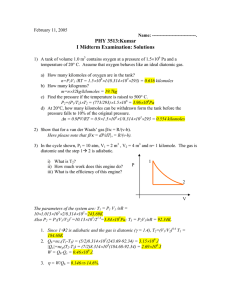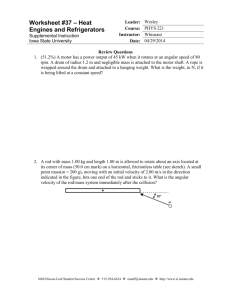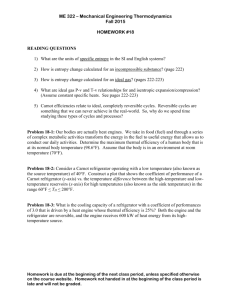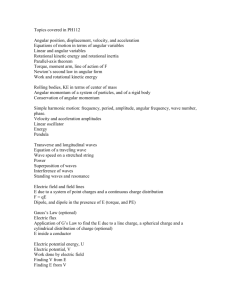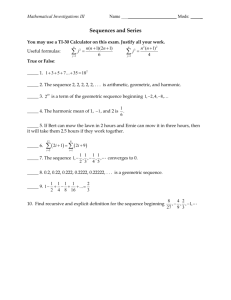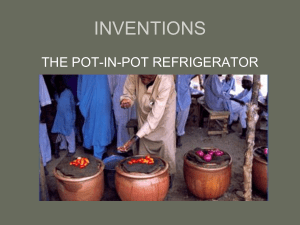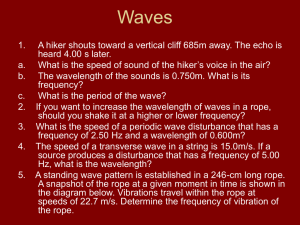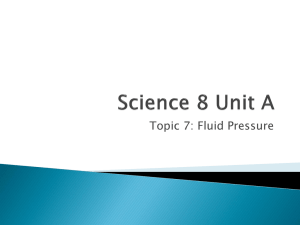Phys 221 SI Worksheet: Review for Final Exam
advertisement
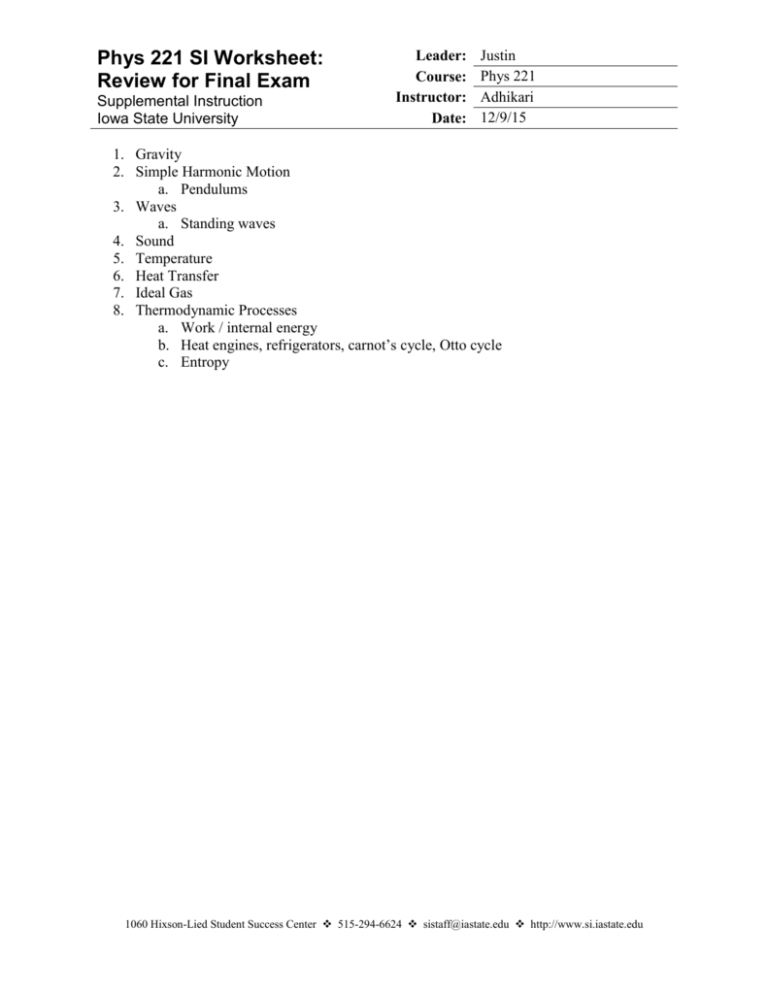
Phys 221 SI Worksheet: Review for Final Exam Supplemental Instruction Iowa State University Leader: Course: Instructor: Date: Justin Phys 221 Adhikari 12/9/15 1. Gravity 2. Simple Harmonic Motion a. Pendulums 3. Waves a. Standing waves 4. Sound 5. Temperature 6. Heat Transfer 7. Ideal Gas 8. Thermodynamic Processes a. Work / internal energy b. Heat engines, refrigerators, carnot’s cycle, Otto cycle c. Entropy 1060 Hixson-Lied Student Success Center 515-294-6624 sistaff@iastate.edu http://www.si.iastate.edu 1. A Planet moves in a highly elliptical orbit about a star. The angular speed is ω, the angular momentum is L, and the total mechanical energy of the planet-star system is E. Which of these are constant as the planet orbits the star? 2. A mass on a spring is displaced and allowed to oscillate. It has a maximum displacement of .5m, angular frequency of 20s-1, and a phase of π. What is the equation for the position, velocity, and acceleration of the mass? 3. A 20kg mass is hanging from the ceiling by a rope with a linear mass density of 2kg/m. A wave propagates up the rope with a wavelength of 0.5m. What is the angular frequency of the wave? 4. A microphone is at a distance of 5.00 m from one speaker and 7.00 m from another. Both speakers are driven together at the same frequency (They are in phase). What is the lowest frequency at which destructive interference between the sound waves from the two speakers occurs at the position of the microphone? 5. Draw the first, second, and third harmonic standing waves for a. A rope fixed at both ends. b. A rope free at both ends. c. A rope fixed at one end and free at the other. 6. How much heat does it take to turn a liter of water at 100 degrees C into steam at 100 degrees C? 7. In a perfectly insulated container 1kg of ice at -10 degrees C is dropped into 2kg of water at 50 degrees C. What is the equilibrium temperature? 8. If it is 20 degrees C inside and 0 degrees C outside, what is the heat flow through a glass window of area 0.3 square meters and thickness 1 cm? (thermal conductivity of glass is about 1 W/mK) 9. What is the rate of heat loss of a black body with area of 1.5m2, and a temperature of 100 degrees Celsius in a 0 degree Celsius room? 10. A steel flask has an internal volume of 300 cm3 at 5.0 degrees C. The flask is inside a refrigerator, where the temperature is 5.0 degrees C, and is completely filled with mercury. The flask and mercury are taken out of the refrigerator and left on the counter of the lab. The system is allowed to come to thermal equilibrium with the room. During the process, a volume of 1.00 cm3 of mercury overflows the flask. What is the temperature of the lab room? (Coefficient of volume expansion is Steel: 3.6e-5 K-1 Mercury: 18e-5 K-1) 11. A chamber of volume 0.50 m3 contains diatomic nitrogen (N2) gas at a pressure of 1.0e5 Pa. The gas is allowed to expand isothermally to twice the initial volume. How much heat flows into the gas, in kJ? 12. 4 mol of a diatomic ideal gas goes through a thermodynamic cycle in which it absorbs 1400 J in net heat and does 2300 J of net work. What is the change in temperature of the gas, in K? 13. A Carnot refrigerator does 240 J of work in keeping its interior at -10oC by removing 2100 J of heat from the refrigerator and releasing it into the room. What is the temperature of the room, in oC? 14. A glass of hot water (W) at temperature 80oC is placed in a cold room (R) at temperature 20oC. After some time the water has cooled to the temperature of the room. Which of the following statements represents the entropy changes: a. b. c. d. e. ΔS(W) > 0 ; ΔS(R) < 0 ; ΔS(total) > 0 ΔS(W) < 0 ; ΔS(R) > 0 ; ΔS(total) > 0 ΔS(W) < 0 ; ΔS(R) > 0 ; ΔS(total) = 0 ΔS(W) > 0 ; ΔS(R) < 0 ; ΔS(total) = 0 ΔS(W) < 0 ; ΔS(R) > 0 ; ΔS(total) < 0
